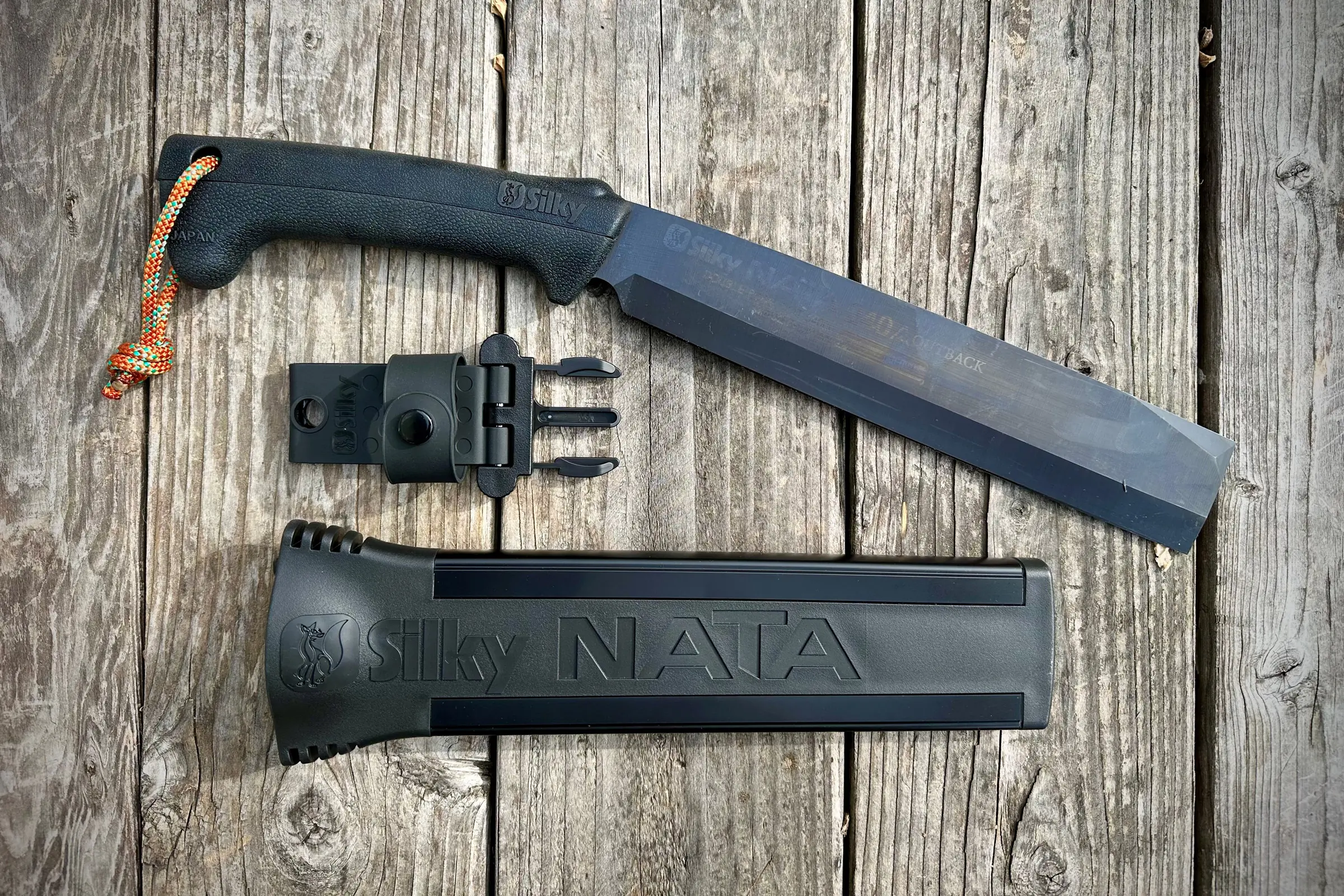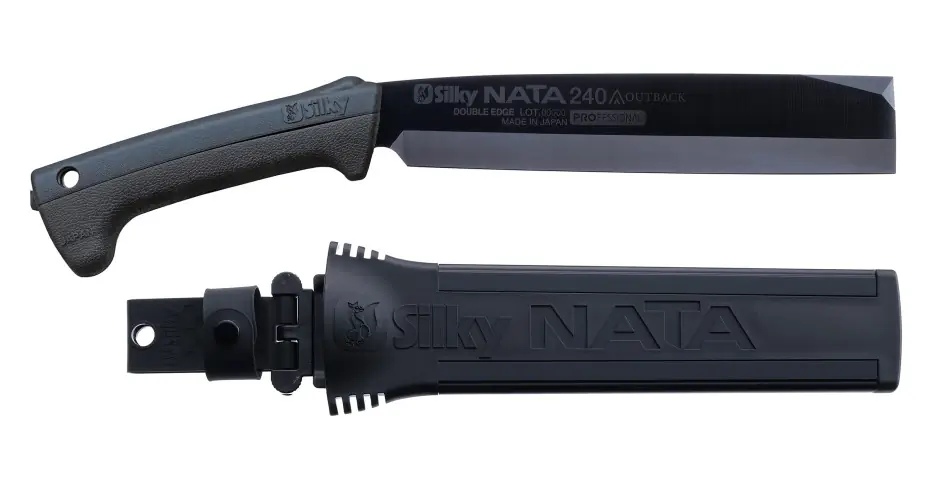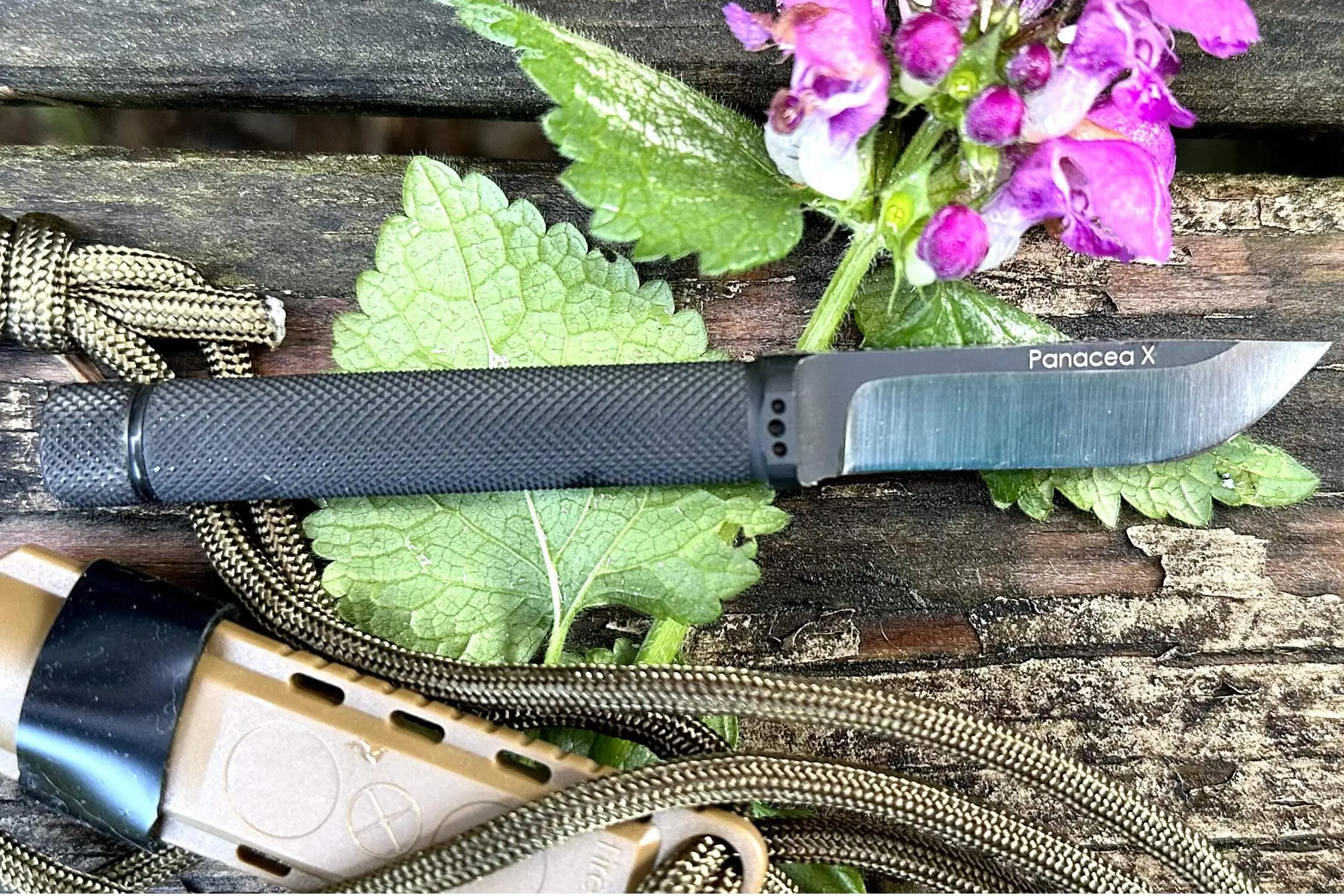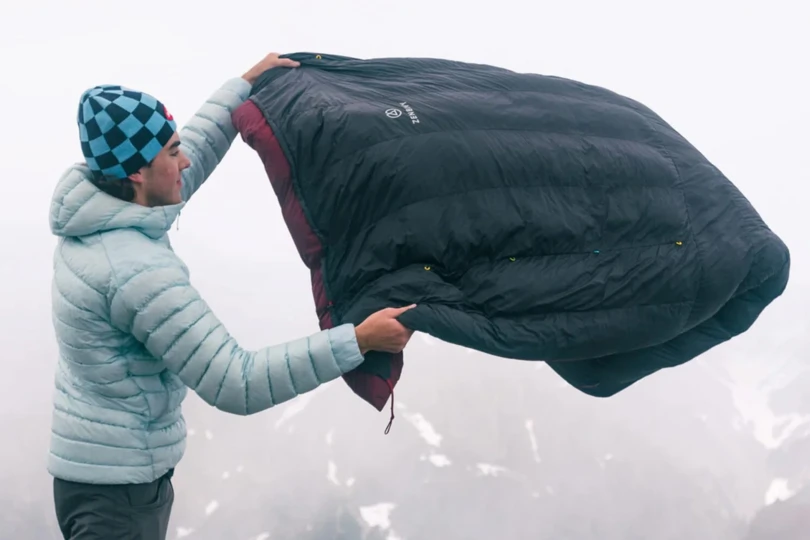Two years ago, after making some website content for Silky Saws, I asked if the brand would let me try out a product that piqued my interest: the NATA Double-Edge Hatchet 240mm. It was a bizarre and fascinating tool to look at. I wasn’t certain how I’d use it. But I knew I’d find plenty of ways to apply it.
See, Japan has some excellent arborists. The act of trimming trees is an art form in Japanese culture. Careful thought goes into choosing what to prune or remove. An equal amount of care goes into crafting and maintaining the tools they use.
In the States, by contrast, we carry a very different mindset of what a hatchet is. Generally, I wouldn’t consider something with a 9.5-inch blade a conventional “hatchet.” I’d call it a machete or a chopper. But, looking at the NATA, it’s canted more like a Kukri. So the only way I could figure it out was to get my hands on one.
Two years later, I’ve used the NATA to clear trails, tidy up my yard, and prep firewood for the fire pit. It swings like a hatchet with the added benefit of having a much longer blade edge. It will be a staple tool in my arsenal for the impending spring cleanup.
So imagine my excitement when Silky reached out to see if I wanted to test out its new NATA: the NATA Hatchet Outback Edition. I won’t spill the tea on what it had in store just yet (you’ll have to read on for that). But I can tell you, having prior experience with Silky’s other Outback-edition tools, I knew my experience was going to be epic.
In short: The Silky Saws NATA Outback is an excellent tool for a life in the outdoors. It carries the geometry and heft of a hatchet but with three times the blade length. It chops, hacks, and trims, and it’s easy to control and maneuver. The NATA Outback can get you through wood and brush with ease. This means more material for the fire, a clear trail for hiking, a cleaner backyard, and plenty of energy left over to enjoy yourself.
- OAL: 16.5”
- Blade length: 9.5”
- Blade steel: Black oxide-coated SKS-51 JIS tool steel
- Grind: Flat
- Hardness: 58-60 HRC
- Handle material: Rubber
- Carry: Ambidextrous belt sheath
- Weight: 1 lb., 9 oz. (2 lbs., 2 oz. w/sheath)
- Price: $110
Pros
- It’s a hatchet with a 9.5” bit
- Extra grippy rubber handle
- Ambidextrous sheath
Cons
- It's scary sharp. Like, “wear Kevlar gloves when you use it” sharp.
- You’re not going to want to put it down.
Silky NATA Hatchet Outback Edition: Review
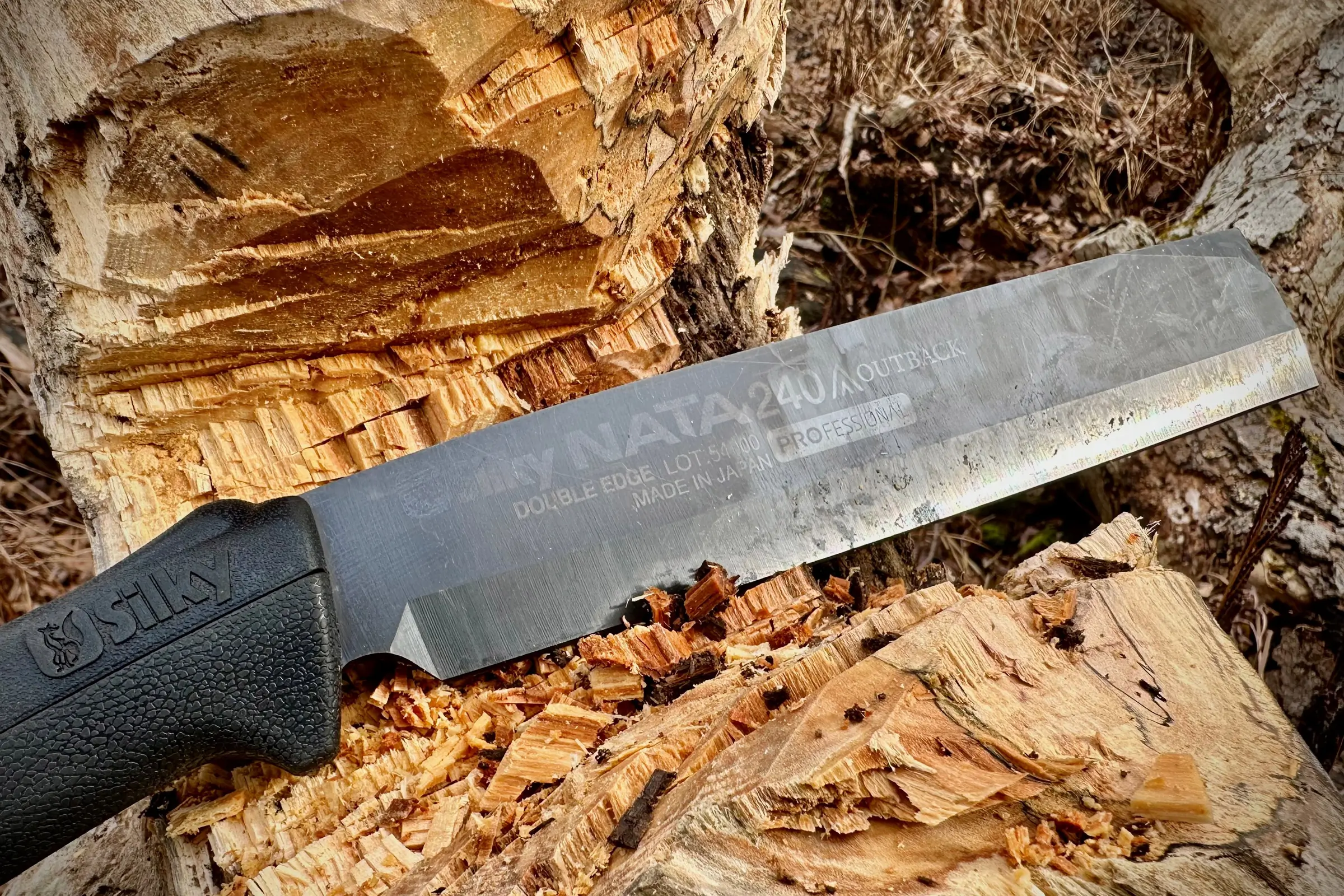
Design and Features
Silky’s initial lineup of Outback tools consisted of the Pocketboy, Gomboy, and Bigboy folding saws. All three featured blades are nickel/tin-plated with composite handles for improved grip. The introduction of the Outback lineup was also an opportunity for Silky to expand the uses of these saws to include processing bone.
SKS-51 JIS Tool Steel
The Silky Saws NATA Outback’s SKS-51 JIS tool steel is common in industrial circular saws and bandsaws. It’s wicked tough, keeps a good edge, and is resistant to blunt-force trauma.
All that makes it the perfect tool to slam into hardwood over and over again. What’s more, Silky sharpened both sides of the blade using traditional Japanese sword-sharpening techniques — the same process handed down over centuries.
As with its other Outback tools, Silky coated the NATA Outback’s SKS-51 JIS tool steel with black oxide. That greatly increases the NATA’s corrosion and abrasion resistance. It also reduces friction, allowing the blade to slide in and out of wet and sappy material better. It also makes it easier to clean the blade before you put it back in its sheath.
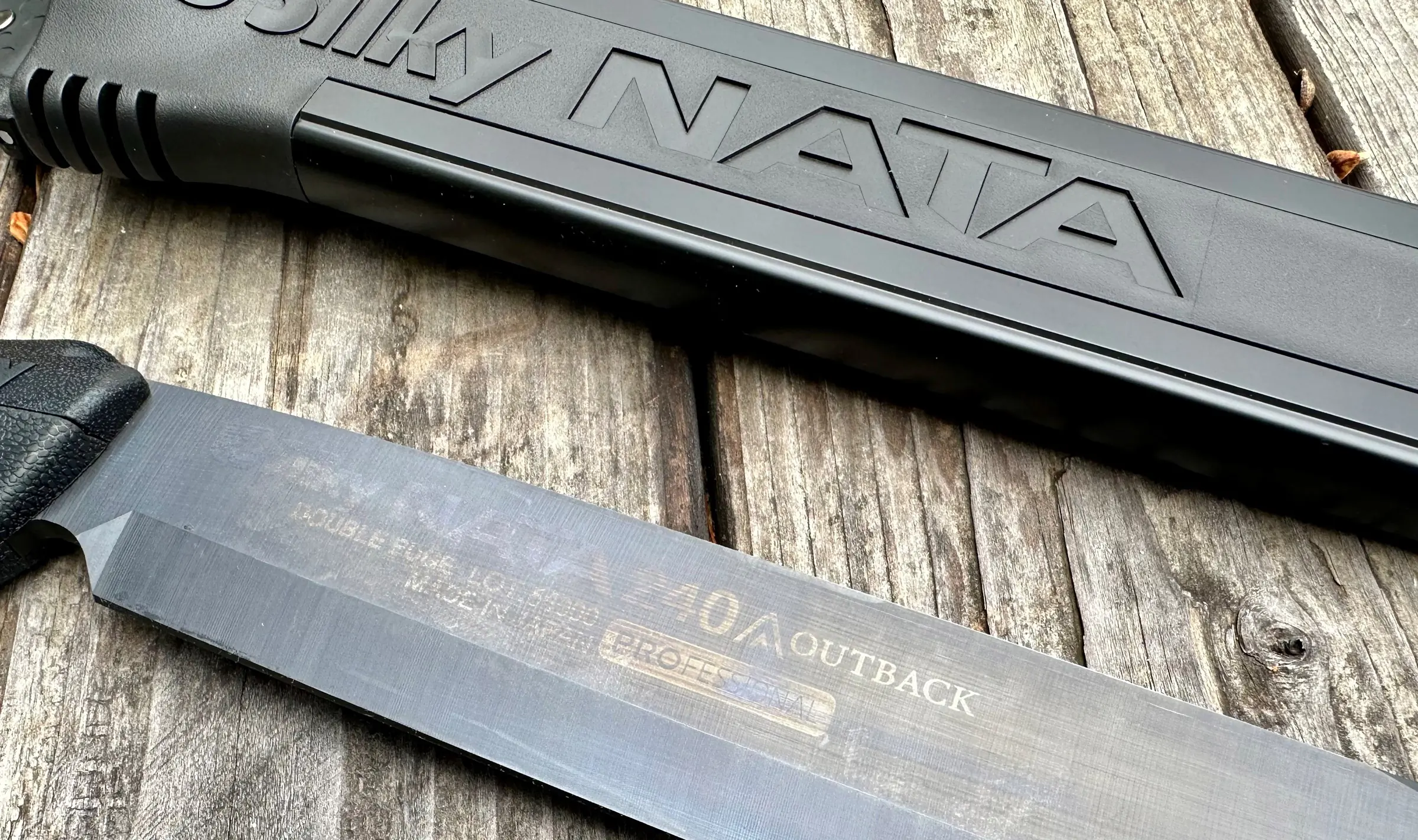



But unlike the other products in the Outback lineup, which have an arbor composite handle, Silky carried over the original NATA’s shock-absorbing rubber handle. You can also remove and replace both the handle and full-tang blade of the NATA Outback.
NATA made the ambidextrous belt sheath that comes with the NATA Outback from impact-resistant ABS plastic with black metal trim. It’s the same material on bumpers in modern passenger vehicles. That protects the sheath’s outer edges from getting banged up. You can also remove the sheath easily from your belt while leaving the belt loop in place.
First Impressions
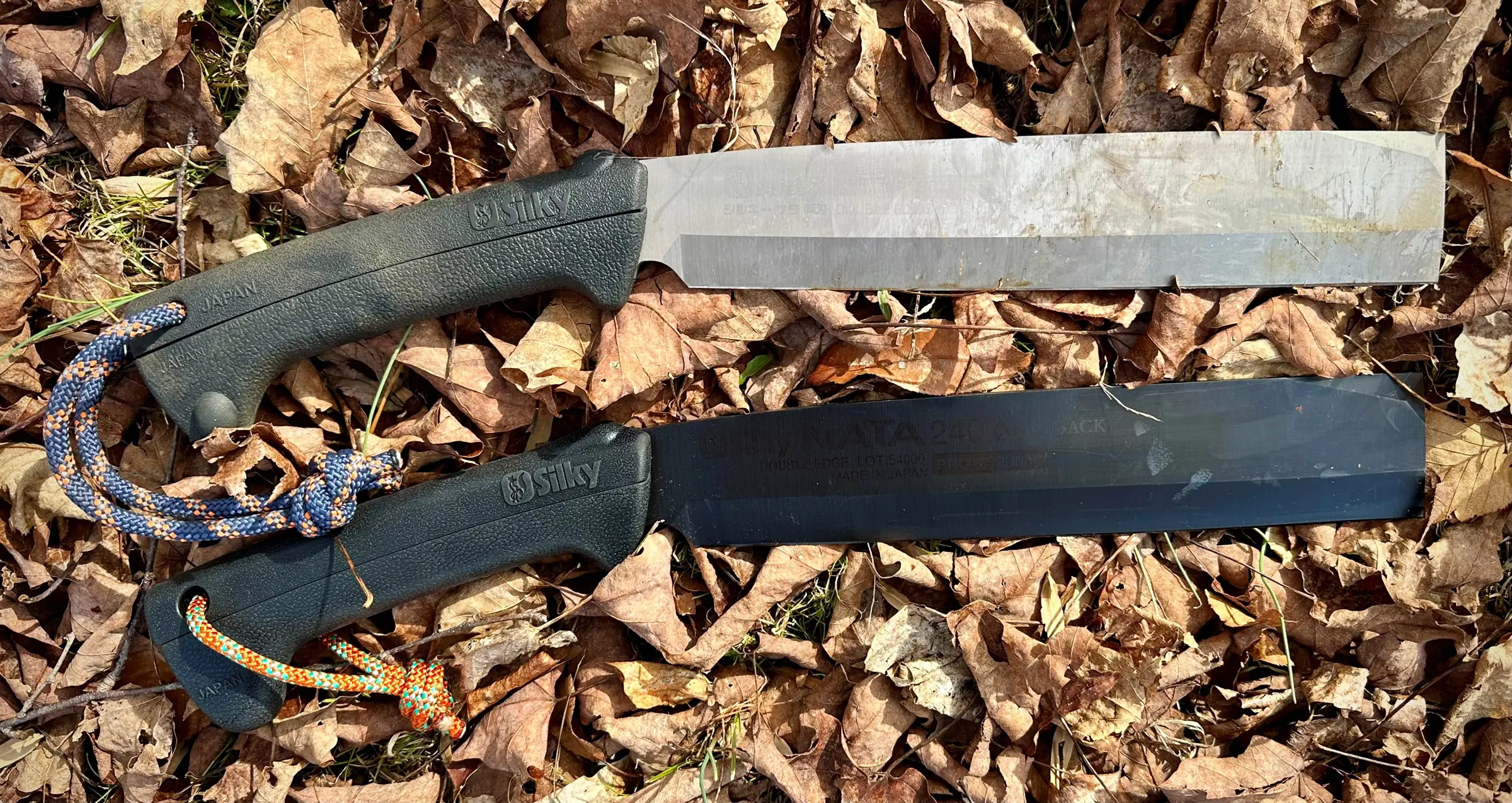



I used the original, non-coated NATA for the last couple of years for a variety of tasks. I used it to clear brush, limb trees, and split wood. And my only complaint with the original was how much crud sticks to the blade. Living in New England, tree sap is prevalent and sticks to uncoated metal uncannily. The only way I have been able to get sap off the original NATA blade is by cutting more limbs and clearing more brush.
So, I was very excited to see how effective the black oxide coating is in eliminating the passionate bond between blade and sap.
Beyond that, all of the other aspects from the original NATA carried over to the Outback version. And I couldn’t be happier about that.
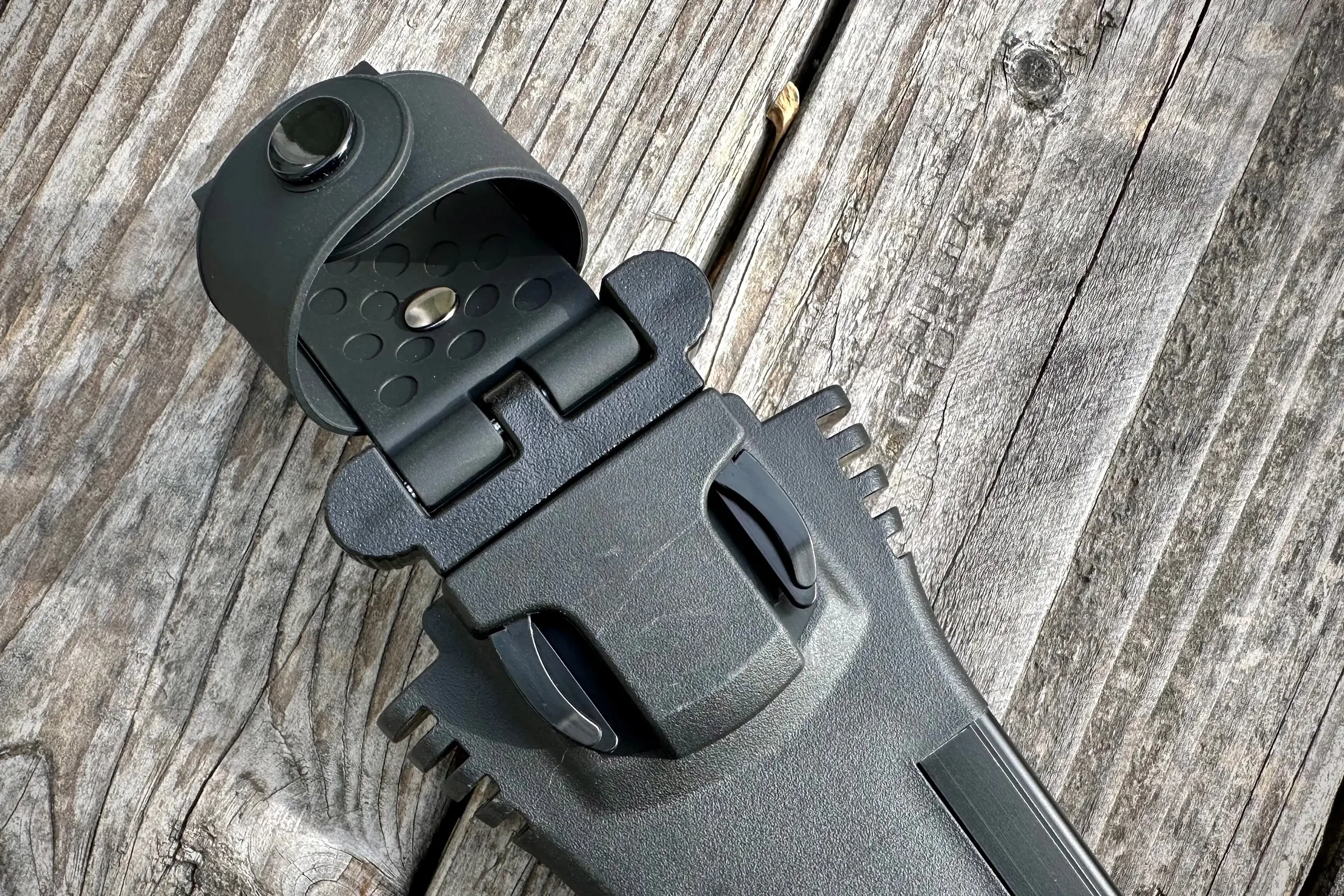



As you can imagine, grip is a major factor in using a tool like this. Out of the box, the rubber handle is very grippy. Overly grippy, actually. Like lint could stick to it (but it doesn’t) grippy. Silky made this handle removable. That way you can replace it or the blade and continue using it for generations yet to come.
I also appreciate the carrying over of the original NATA sheath. It is impact-resistant ABS, features ample drainage, and the belt loop connects with a side-release buckle. This allows you to remove the NATA with the push of a button without removing your belt. It also makes it ambidextrous.
Overall, I expected the same level of performance with the NATA Outback that I experienced with the original NATA — hopefully, even better.
In the Field
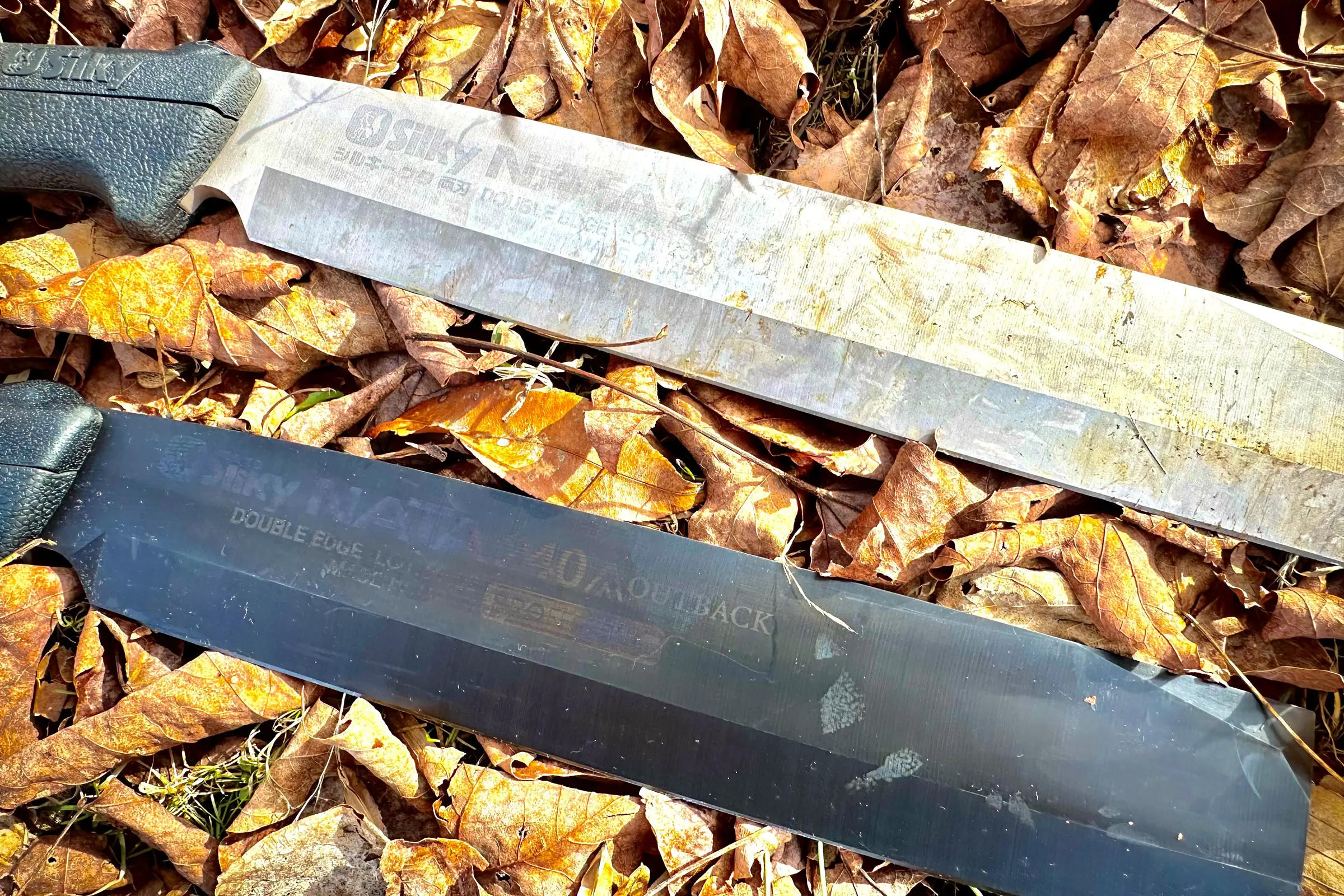



Out in the wild, the NATA Outback overperformed. Right off the bat, I could tell the black oxide coating makes a big difference. Not only is the condition of the blade better when you’re done, but the NATA Outback also passes much more smoothly through wet and dry wood. Nothing sticks to it that I can’t easily wipe off.
Having the length and curve of a hatchet, but with a 9.5-inch blade instead of a 3- to 4-inch blade, means that all of your swings land good and true. In clearing a path through my yard to our stream, I was switching between clearing brush and taking down 1- to 2-inch thick limbs and saplings. The area I found myself working in is mostly swamp land, so the brush grows thick and is full of prickers.
Even so, I was able to make some serious headway in minimal time. I was impressed with how much I did in such a short time — even with my prior experience with the original NATA.
I’ve been avoiding a massive spalted ash limb that dropped in my backyard over the summer. Coming off of one of the largest trees on the property, it’s easily 20 feet long and 8 inches thick. Suffice it to say, when this sucker came down, we all heard it. In fact, it shook the house. I would have continued avoiding it all winter, but it was blocking a stream I’ve been working to get clear a path to.
I reasoned, what better time than the present to address it with the NATA Outback?
A Near-Perfect Camp Tool
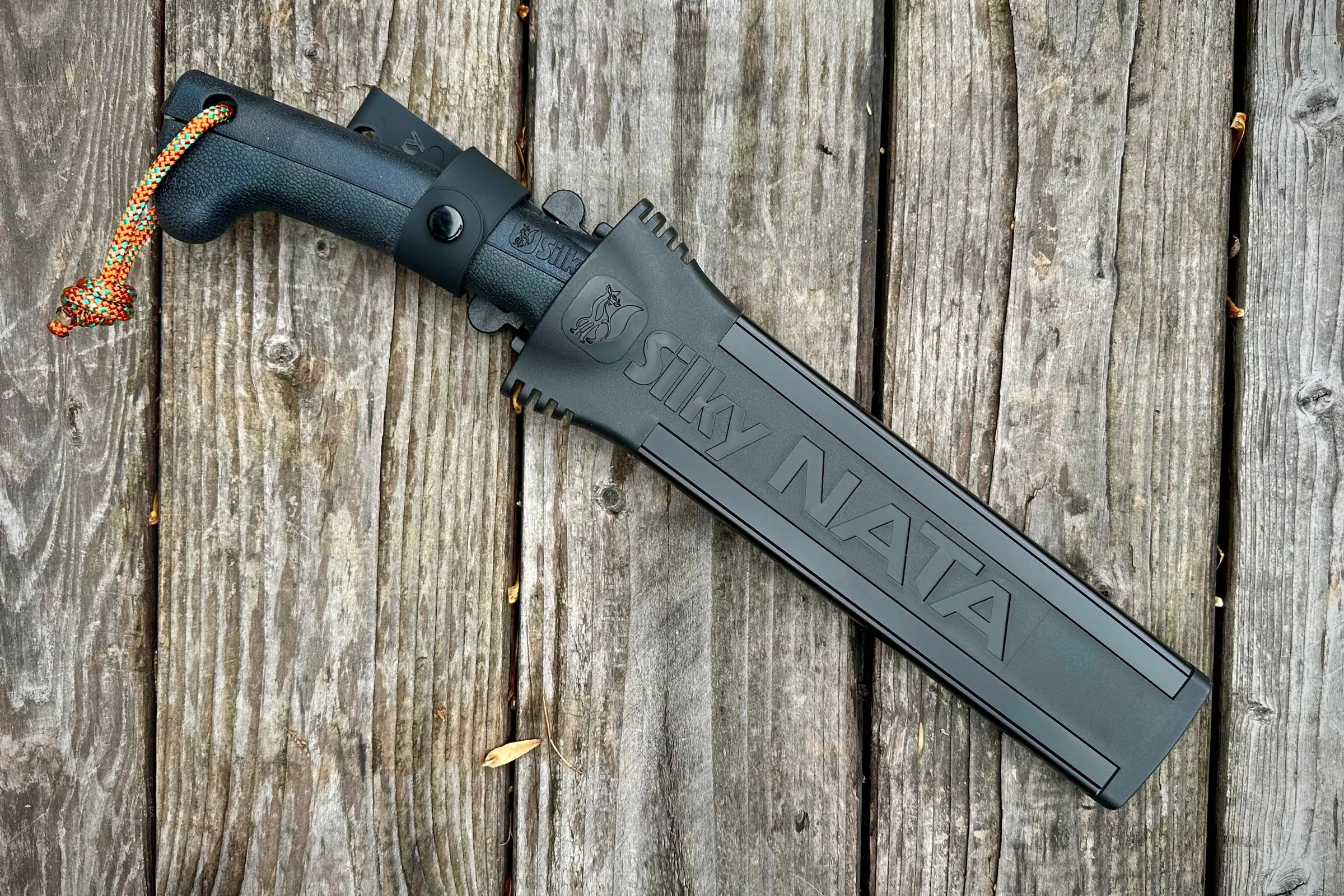



There was debris I planned to process with a chainsaw in the spring. But with the NATA Outback, I cleared it in less than 10 minutes. It was fantastic. It was empowering. I think I even sent out a battle cry.
That said, beyond cutting, chopping, chipping, and slicing, the NATA Outback is a great tool for digging and prying. At 16.5 inches long and nearly 0.25 inches thick, the amount of leverage you can get out of this tool is pretty incredible. I wouldn’t plan on digging up boulders with it, but you can totally get some rocks and stubborn tree stumps up and out of your way with minimal effort.
Now, here’s where the black oxide coating really proves its worth in spades. It went through everything in front of me and was ready for more. All the NATA Outback needed was a wipedown with a wet rag and it was back in its sheath looking top-notch, hanging in the shed, next to the original NATA.
Silky NATA Hatchet Outback Edition: In Conclusion
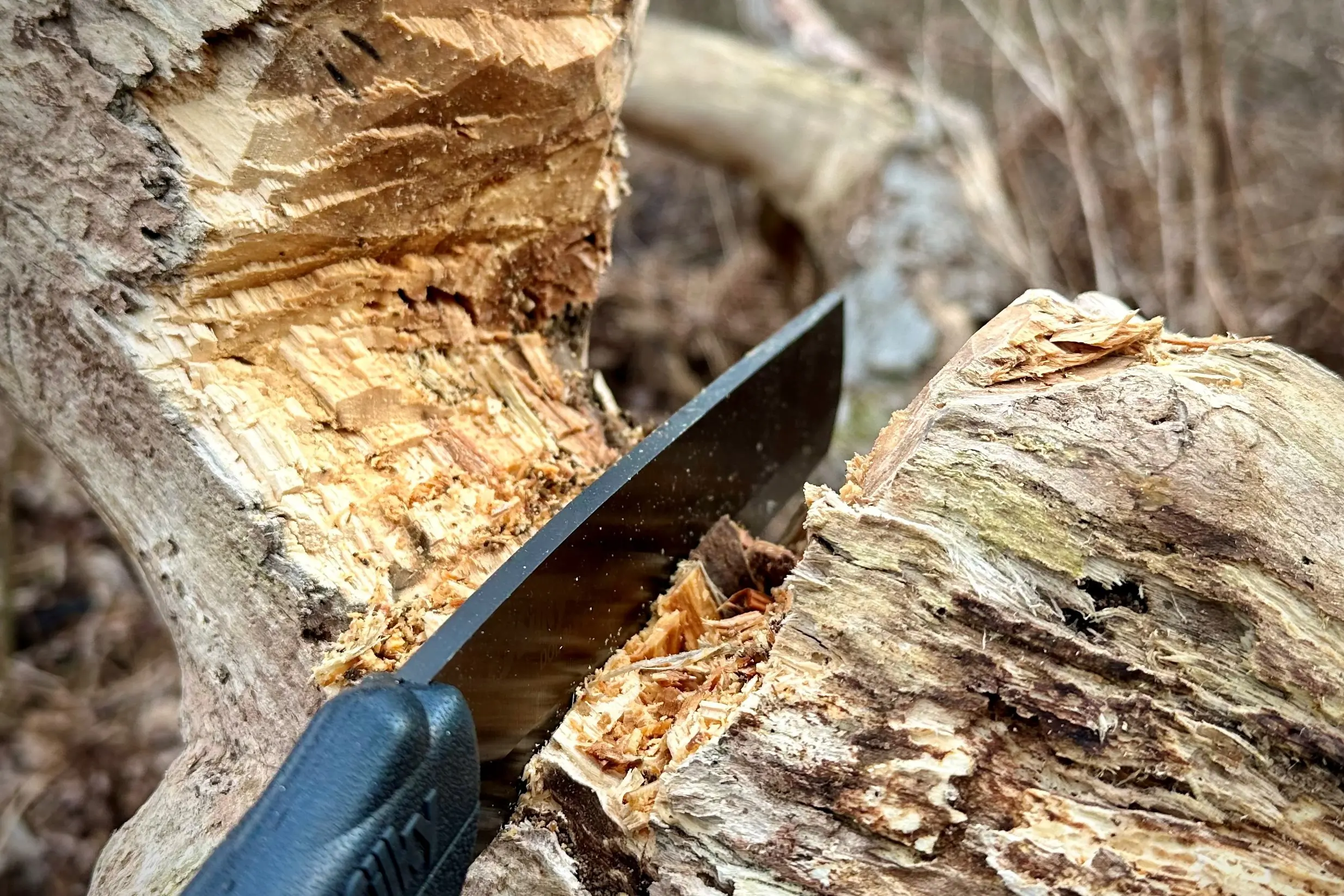



The Silky Saws NATA Outback Edition is, at minimum, four efficiency tools in one: hatchet, machete, prybar, and trowel. It’s designed to be a cutting tool. But based on its form, the black oxide coating, and the extra-grippy rubber handle, you can rest assured that it’s going to be one of the best camp and yard tools in your collection. You might find yourself leaving the brush cutter and chainsaw behind.
I picked up a nice little arm workout on a few occasions with both NATAs. But that black oxide coating allows the Outback version to flow into wet and dry wood without getting hung up or stuck.
Overall, I can attest that you can totally go berserk with this thing and have massive results to show for it in the end. However, the NATA Outback is so fine-tuned that you need to let the tool do the work. You have heft, leverage, and ergonomics on your side. There’s also the centuries-old sharpening method that Silky employs.
It’s a no-brainer for me to recommend that a NATA Outback should be hanging in all of your sheds or garages. You could also strap it to your pack, leave it in your truck, or keep it up at your favorite family cabin. I promise you, just like the original NATA was a game changer, the NATA Outback will have you looking around for more materials to process.
